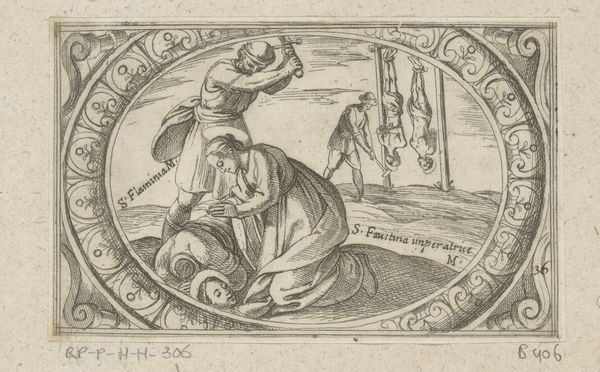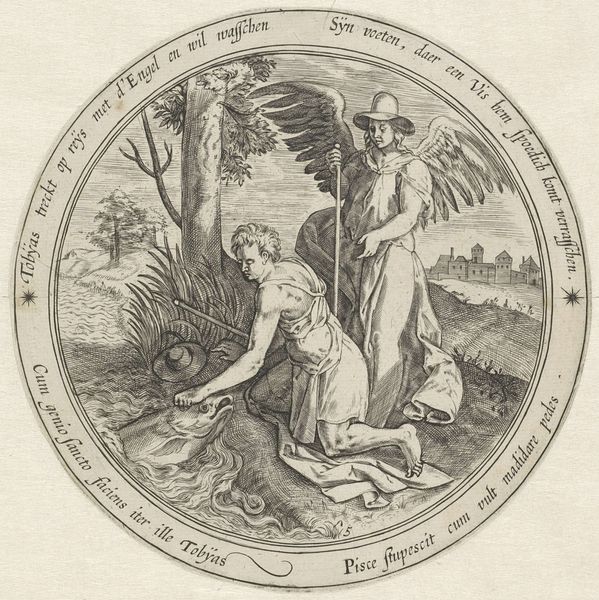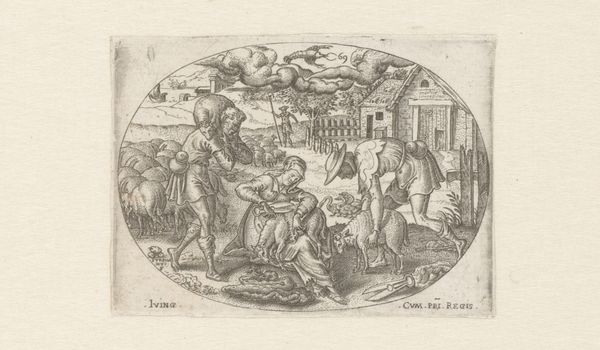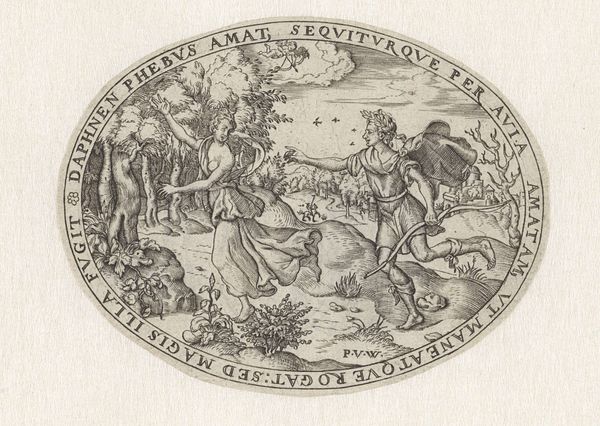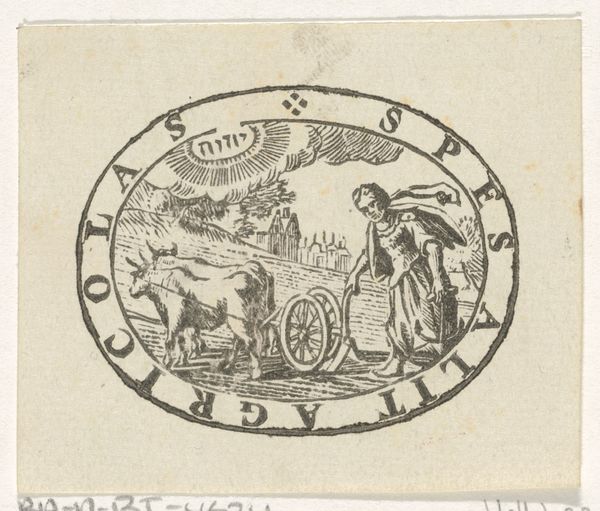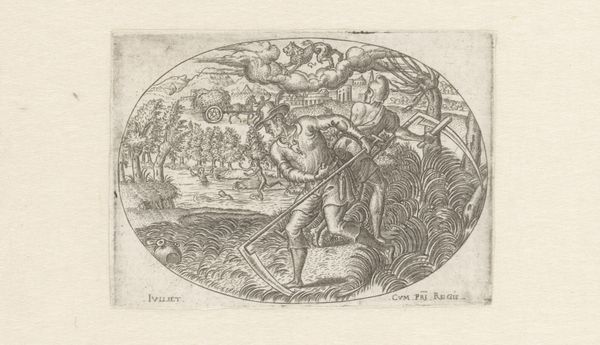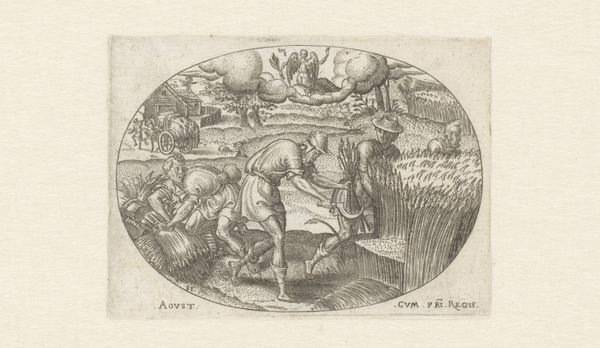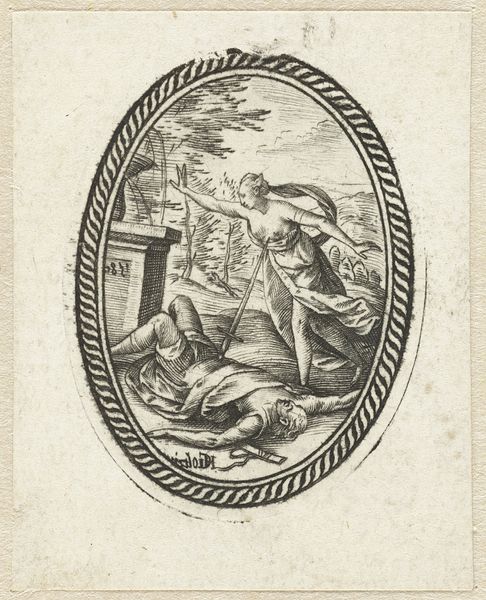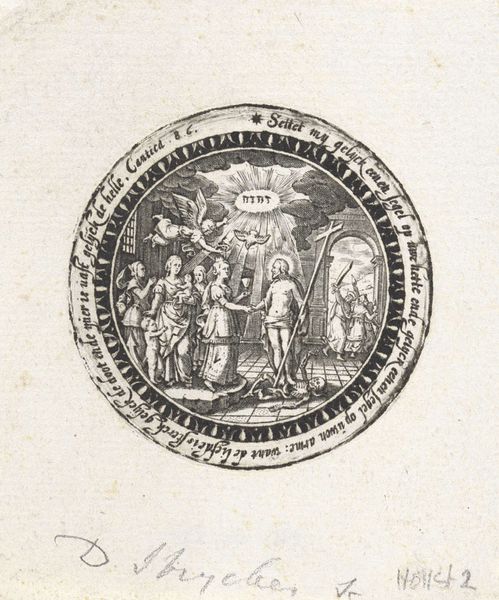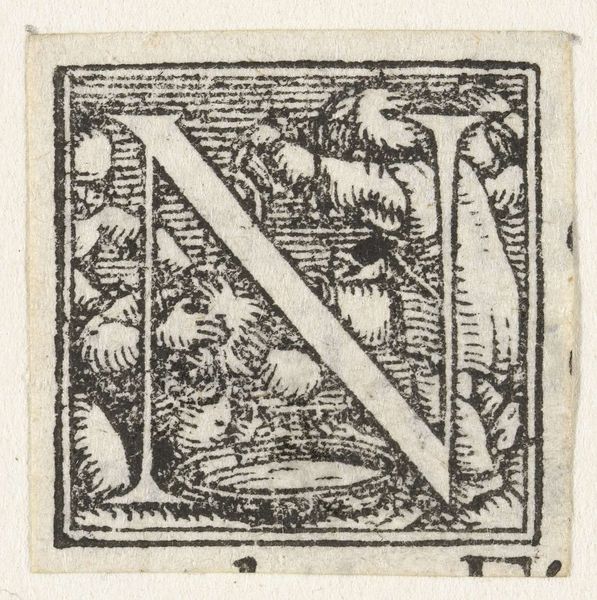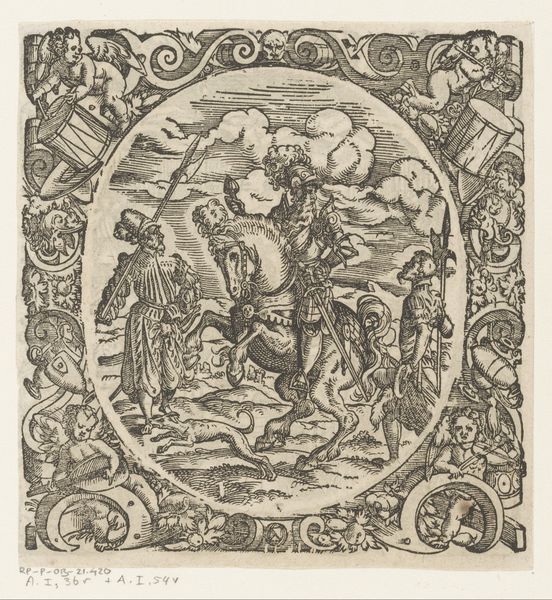
drawing, print, etching, engraving
#
drawing
#
narrative-art
# print
#
etching
#
figuration
#
ancient-mediterranean
#
history-painting
#
engraving
Dimensions: Plate: 2 5/16 × 2 15/16 in. (5.8 × 7.5 cm) Sheet: 2 9/16 × 3 3/16 in. (6.5 × 8.1 cm)
Copyright: Public Domain
Editor: This intricate etching, "Hercules Killing Diomedes" by Etienne Delaune, dating sometime between 1540 and 1583, depicts quite a violent scene within a carefully designed oval. It’s stark, graphic…almost like a miniature stage. What stands out to you as you look at this? Curator: For me, it’s the process of printmaking itself. Delaune, using engraving and etching, is participating in a specific mode of production and distribution. Consider the labor involved in creating the matrix and the implications of easily reproducible images. How does this ease of replication alter the artwork's value, or even its accessibility? Editor: That’s fascinating. So, the act of creating multiple copies changes the art itself? Curator: Absolutely. Think about who would have owned such a print. Not necessarily royalty or the elite who commissioned paintings. Perhaps scholars, merchants, or even other artisans used them for inspiration or to engage with classical stories in new ways. The materials – the copper plate, the ink, the paper – these were commodities within a larger economic system, contributing to its circulation and meaning. Does knowing that change how you understand the choices Delaune made in representing this particular myth? Editor: It does. I was focused on the story, but now I see it as an object within a broader network of production and consumption. Almost like early mass media. Curator: Precisely. This image then isn't just about Hercules and Diomedes. It becomes about the flow of knowledge and artistic ideas in early modern Europe and their material impact. Editor: It's incredible how shifting the focus to materials and production reveals entirely new layers of meaning! Thank you for helping me see it in this new light. Curator: My pleasure. Thinking about art in this way makes it more relevant to understanding the broader world around us, doesn't it?
Comments
No comments
Be the first to comment and join the conversation on the ultimate creative platform.

